Synopsis: Prehistoric positive and negative hand-prints were not made by accident, they tell a story of communication. This essay investigates whether red hand stencils testify of prehistoric peoples attempting to contact deceased tribal members and white hand images mark successful communicating with the dead.
I like to present an idea about prehistoric positive and negative hand-prints that are found all over the world and dating from circa 40.000 to 1.000 BCE. There is a remarkable difference between red and white hand-prints. The message, to my understanding, is that both hand-prints testify of successful communication with deceased souls. Why I have come to this thesis, I will explain.
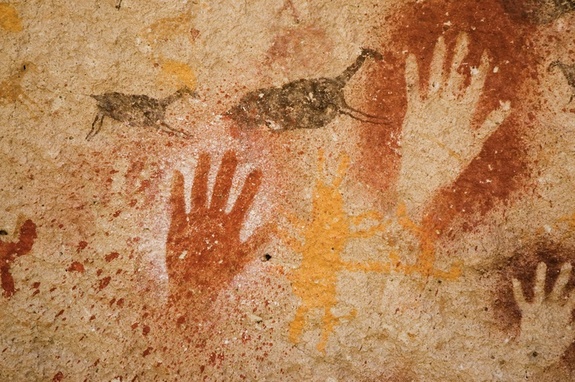
How to read on? There are two ways. I hope that by asking either to support my work (art & writing) or by asking 2 Euros for downloading my essay that this website remains online not only initiated and maintained by me buy also supported by its loyal public.
1. Should you buy one of my art cards, email me at mindfuldrawing@gmail.com, and I will send my essay as a PdF for free.
2. My essay can be downloaded here: https://www.etsy.com/listing/1614633965/essay-prehistoric-hands-invite-and
Paula Kuitenbrouwer
Artist/Philosophy M.A.
N.B. Inevitably I am, as a lay person, simplifying and generalizing archaeological research. I hold a degree in Philosophy, studied ‘Religion and Rituals in Prehistory’ at Oxford Department of Continuing Education, and have read many books on prehistoric art. However, my essay is presenting an idea (only), unpretentiously, and it welcomes criticism.
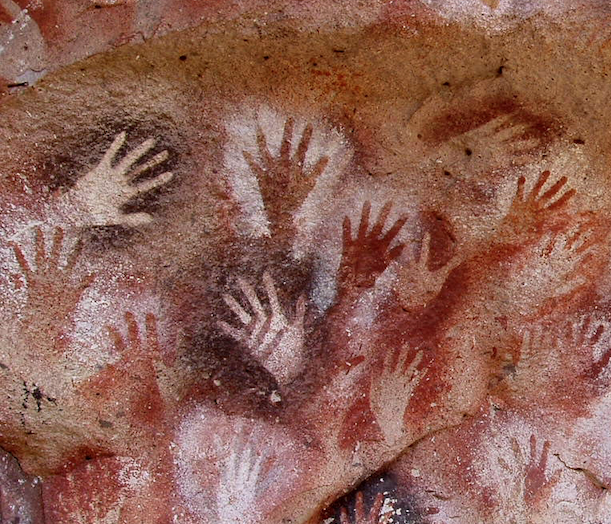
Paula holds an MA degree in Philosophy and she is the owner of mindfuldrawing.com. Her pen and pencils are always fighting for her attention nevertheless they are best friends; Paula likes her art to be brainy and her essays to be artistic.
Paula’s shop at Etsy
Paula’s portfolio at Instagram
May I kindly ask, have you appreciated this essay? My website by now tallies 180,000+ visits, with visitors reading an average of 2-3 pages. It is my wish to make my website self-supportive. Please, feel invited to support and to return to my website that has fine art, spirituality, and nature appreciation at its heart.
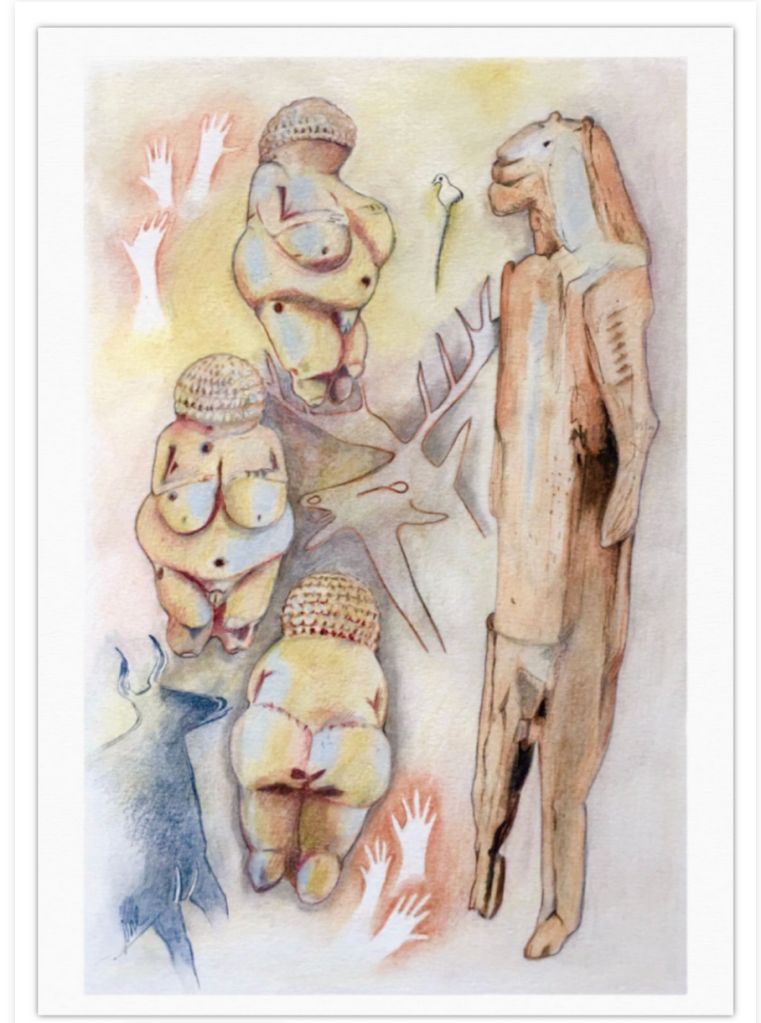
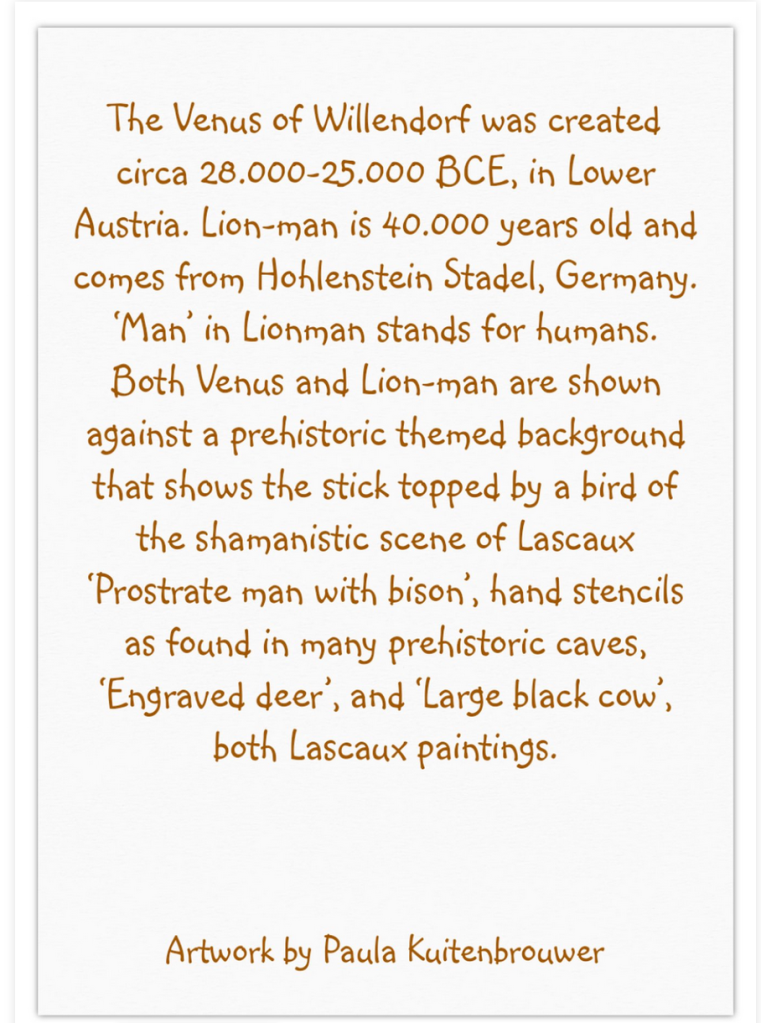

Three (3) Venus of Willendorf & Lionmen Art Cards
Three (3) art cards size 7-10 cm or 3-4 inches. Free shipping. Showing a composition of the Venus of Willendorf from 3 sides, Lionman and several hand-stencils and scenes from the famous Lascaux cave. Painting by Paula Kuitenbrouwer
€10.00
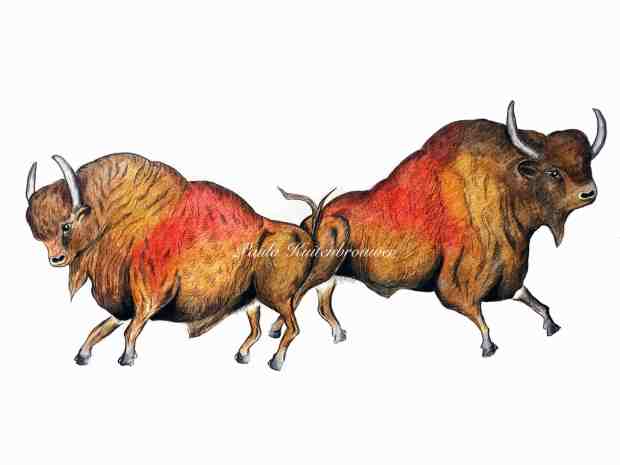
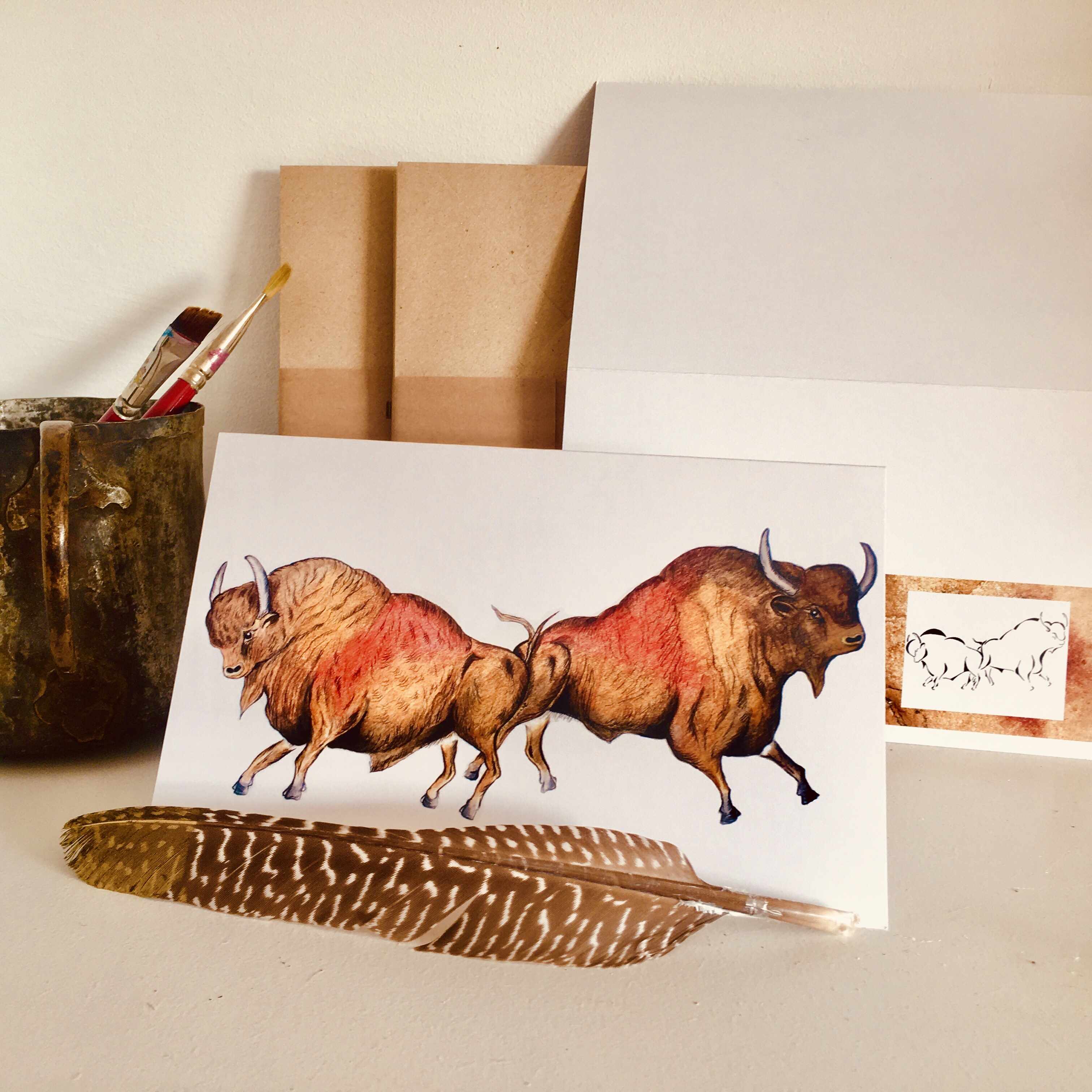
Two Lascaux Crossed Bison Art Cards
Artwork by Paula Kuitenbrouwer. Two are cards with Lascaux’s famous Crossed Bison. As if they appear from a crack in the cave wall and thunder in your direction. (Essay on this artwork and the bison of Lascaux are on this website). Comes with matching envelopes. Free Shipping. One for sending: one for keeping. Professionally printed.
€18.00
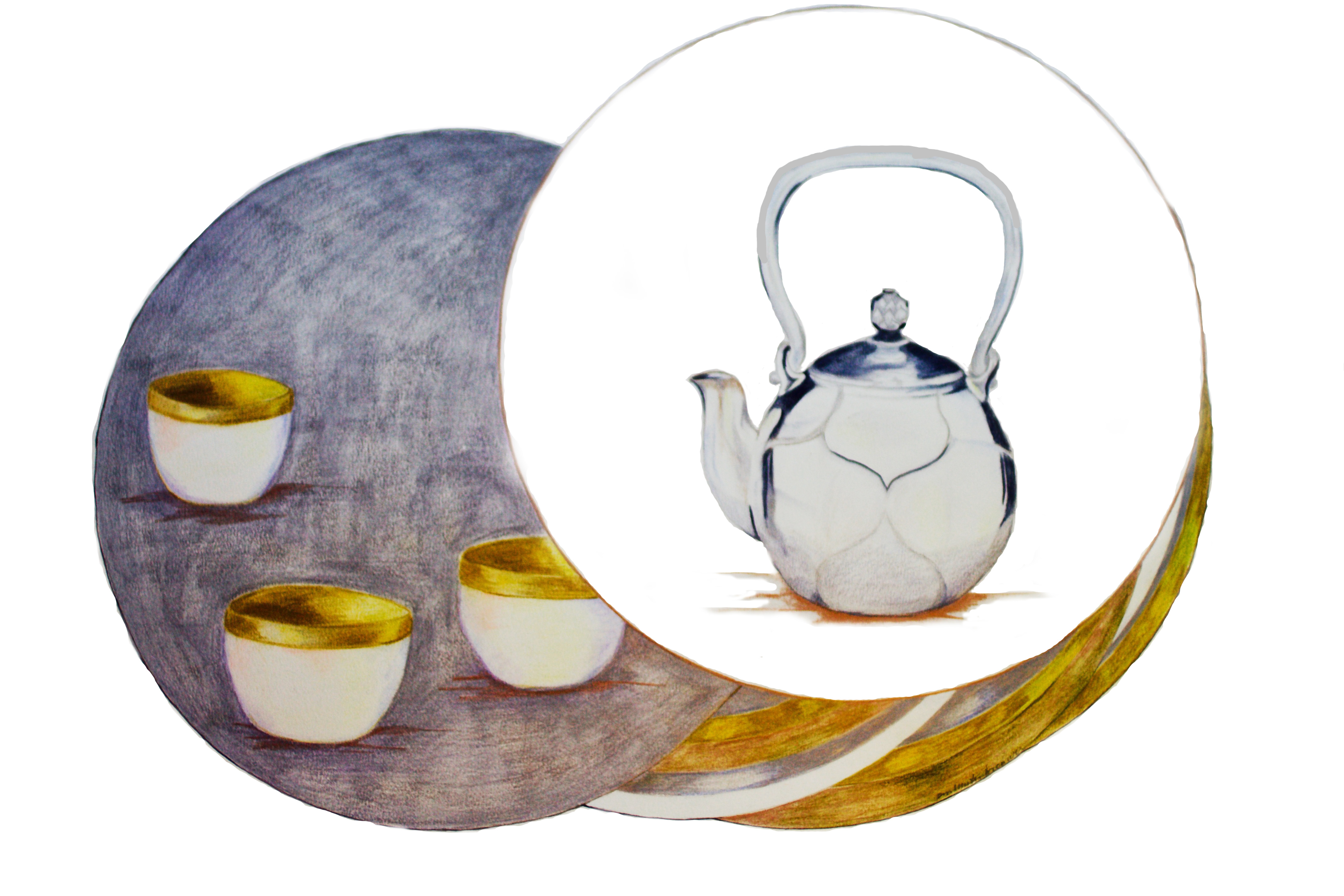
A cup of coffee for the author!
Thank you very much!
€3.00
Related and Latest Posts
- The Artist’s Life
- Swedish Death Cleaning or Döstädning & Dementia
- Swedish Death Cleaning Part 3.
- Swedish Death Cleaning Part 2.
- Self Portrait



In a time before mirrors, I imagine hands were the most personal aspect a person had of themselves. They’d see their hands doing things all the time, but never a clear reflection of their own faces. You bring up interesting points. Whatever these people thought, isn’t it wonderful that we can see they were real people who lived so long ago?
Linda, You offer a deep yet also practical insight that I completely overlooked. Many thanks!
I contact you soon for catching up.
I see on the image shown of the red and white handprints -also the figures of fleeing animals-deer possible-to me my first thought at seeing this image was to grap these animals-get a hold of them-a direct story telling of their need of food in those hard times of survival. It is the first meaning this image suggest to me-GET THE ANIMAL.
I do not question ” the spirits of theancestors interpretation”. Their world must have been full of spiritual believe to conquer their outside world -filled with pain and hardship in the struggle to survive -to stay master of their iside world also of sickness,dreams and all kinds of fear bringing mindprocesses .
We will never know for sure what made them paint certain images-it will always remain speculative theory.
Indeed, our interpretations are speculative and show us too what we project on prehistoric peoples. We know a lot, but we will never know for sure. This uncertainty is fascinating. At least, to me. Thank you for your reflection. Interesting!
Great article Paula, right up my alley! It is easy to see the distinction between the ‘living’ red hand prints and the ‘deceased’ white hand prints, and their association with connecting with ancestors imprints left on stone. When I was putting together my family genealogy and history, I often entered a trance state and spoke with ancestors, especially when I got ‘stuck’ and didn’t know where to go next, an ancestor would pop up and start talking to me. They often came to me in my dreams, both whilst asleep and awake. As Jung said, ” When I worked in my family tree, I understood the strange communion of the the destiny that unites me to my ancestors! ” and that, ‘ they are waiting for us to connect with them.” We make the descent into the heart-caves of our ancestors. Joseph Campbell said, “The cave you fear to enter holds the treasure you seek.” In MDR, Jung (pg. 88) echoes a similar statement, “My own understanding is the sole treasure I possess, and the greatest. Though infinitely small and fragile in comparison with the powers of darkness, it is still a light, my only light.” http://jungiangenealogy.weebly.com/ancestral-gnosis.html Anyways, thought you’d be interested in Koonalda cave, in the Nullabor plains, which was known by aboriginal people as the ‘womb cave’. In First Footprints dvd narrated by Ernie dingo, aboriginal people discuss what their ancestors used it for. To them, it was the birth place of the World, where they were born into life from the Womb of the Earth. It was a major initiation site, going back to approximately 22000 years ago, and there are lots of finger fluting (scaping into the soft limestone) imprints, and the aboriginal people say that was part of their initiation as they pulled themselves up and out of the womb and into the World. http://www.visual-arts-cork.com/prehistoric/koonalda-cave-art.htm and https://www.environment.gov.au/system/files/pages/c7ba631f-b529-4679-af5e-ec1114b34d08/files/fs-koonalda-cave.pdf 🙂
Dear Bridget, I am going to enjoy your links, especially the womb cave link. I had no knowledge of this cave having limited myself to West-European caves.
Many many thanks for your valuable comment, that surely is my cup of tea!
You are most welcome Paula. You will find the womb cave Koonalda Cave links I sent you from a basic ‘archeological perspective’ only, yet as I wrote, First footprints, ABC TV in particular episode 1 Super Nomads, 50,000-30,000 years ago, and episode 2 The Great Drought; 30,000 To 15,000 Years Ago, ( in which you’ll find the Koonalda Cave) will be particularly interesting to you, as archeologists talk with aboriginal elders and they share their ancestral stories with them, related to artifacts, cave paintings, topographical changes, megafauna etc… Here is a pdf link: https://files.clickviewapp.com/v1/files/5ef641bf342341b595865fc634058036 and here is a link to the ABC TV programs: http://www.abc.net.au/tv/programs/first-footprints/ 🙂
Here’s an excerpt to watch! https://www.youtube.com/watch?time_continue=129&v=xrqW3Lt7THw
I invite you to my new post too: https://bridgetcameron.wordpress.com/2017/09/24/heart-cave/ cheers 🙂